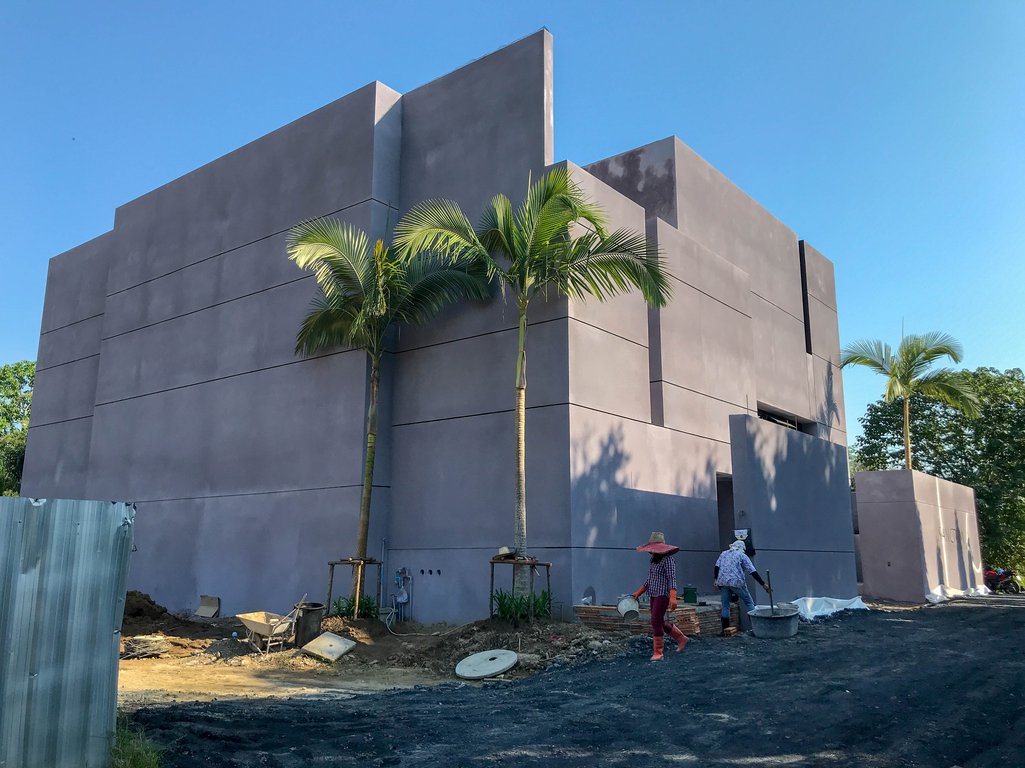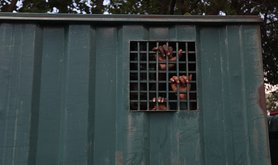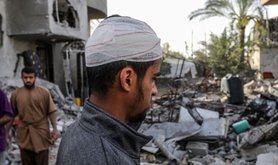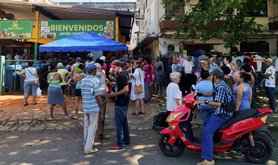
Bunker – by Bradley Garrett
“ Bunker benefits as a piece of work from the mere fact of taking its protagonists seriously as humans and as members of society, rather than as outlandish characters.” Review.

I first met Bradley Garrett in the autumn of 2015, with both of us giving talks at an event about how what often gets called ‘adventure’ might be given greater social purpose.
I went first, and talked about the many acts of kindness I’d received when cycling around the world, but questioned how we could build institutions that reflected the core humanity those kindnesses seemed to indicate. Brad spoke of how, as an urban explorer, he felt it important to get into places – under the ground or above the city – that we are not necessarily allowed to enter. He reasoned that it was by testing the limits that you got a greater sense of the architecture, and so the society and values, that we build for ourselves. Afterwards we talked about our different approaches to geography and writing: we got on well.
It was later that winter, however, in a lightweight aluminium boat in the middle of the Hudson River, beneath the central span of the Tappan Zee Bridge, that I actually met Brad – in that way you get to know a person better. We were filming a man paddling a boat made from the rubbish of New York City, as it made its way through the cranes, winches and concrete columns of the new bridge under construction, while the traffic roared across the old Tappan Zee, and huge oil barges ploughed through the waters of a river turning tidal.
Our filming raised alarm. First came unmarked boats, clad with metal panelling, and operated by private security firms. Gruff men shouted loudly that we were in a restricted area. By the time a second such boat arrived, it was obvious that the police helicopter swooping in overhead was also bound for us. Police boats belonging to both New York City and New Jersey were scrambled from both riverbanks. Even in those easier days, before the world grew quite so conscious of US police militarism and brutality, as officers interrogated us all on the shore – saying that rucksacks, men with beards, and an unmarked boat, had all served to trigger suspicions of terrorism – it was a solid dose of white privilege, and perhaps too the shock at well-spoken British accents, that had us let-go with no serious reprimand beyond not trying it again.
Before the police arrived by air and river, the three Brits aboard our boats took what is perhaps a more culturally European approach to private security officers with no real legal authority – we ignored them. As the drama heightened, however, with a hand on the tiller and the boat made of rubbish struggling in the waves, I remember watching Brad in his lifejacket, leaning over the edge of the boat and remonstrating passionately with one security guard, who was scowling at the wheel of his unmarked boat. It took a moment to hear, over the waves and noise of the river, the sound of Brad explaining that this was a public waterway and that we had every right to be navigating it. It was one of those warm moments in life, when you learn that someone is exactly who you thought they were.
Bunker is the culmination of work that Brad was just beginning in 2015, a multi-year trawl through the world’s survivalists and so-called “preppers”; those taking matters into their own hands and building architecture for the end times.
As would be expected of such a quest, multiple examples herald from the survivalist enclaves of US states like Idaho and Utah, but the project is more global in scope than past ethnographies of these communities. The story runs at a good pace and includes forays into both the settler-survivalist spirit of Australia, and so too the permanent, state-level bunkering that predominates in a country like South Korea, and which many youth, refusing to live by such a contract with doom, have come to forcefully reject.
In a movement clearly charged with machismo and nationalisms white or otherwise (but often white), the book also has a welcome undercurrent of respect for those Aboriginal or Native communities that have long lived off the land; those who are “survivalist” in nature rather than in name and identity.
While the writer Robert MacFarlane centres the book’s “grim” warning, and past documentary by Louis Theroux on survivalists was as entertaining as it was fetishising, Bunker benefits as a piece of work from the mere fact of taking its protagonists seriously as humans and as members of society, rather than outlandish characters.

The prepper community
In this respect, the greatest service of the work is in its refusal to cut preppers loose; ironic, given that this might be seen as the main purpose of prepping itself. The book resists the temptation to judge or otherise these literal doom-harbingers, instead insisting on their rationality. In such a careful study, preppers become a mirror to the fearful world we have created, but show also some clues of how to repair it.
Two little-documented characteristics become apparent at the heart of the prepper community. First is the well-meaning nature of many of those in this subculture; people who are building out of hope for renewal, perhaps more than out of fear or dread. Second are the quick-buck capitalists buying-up used bunkers and – like an inverted, subterranean pyramid scheme – only able to complete work for the last customer with a sale to the next.
In amongst the apocalypse hypotheticals, there is often a mundane sense of profiteering that goes to the heart of whether such projects have in them the key ingredients of faith, integrity and solidarity that surviving a doomsday might seem to rest upon. The book consistently reflects on whether the construction, marketing and sale of doomsday architectures ushers into being a mood that is its own self-fulfilling prophesy.
We are repeatedly introduced to so-called “merchants of dread”, a turn of phrase that owes something to the US corporate and oil men, those “merchants of doubt”, who helped lobby against timely action on climate change as its science became apparent in the twentieth century. In the similarity of phrasing, there arises the sense of these particularly US merchants not just as laggards, but perhaps bulwarks against progressive values globally. While (presciently) pandemics and (less so) nuclear apocalypse, are prominent in the imaginings of the preppers, it is revealing that the preparations that have so-far seemed to come in most useful have been as a response to climate change disasters that are already here – be that the raised pickup trucks used to evacuate hurricane-hit areas of the US, or fireproof bunkers by which Australians have escaped wildfires.
Private bunkers
Bunker, however, goes beyond the practical examination of architectures and vehicles, and in evaluating Cold War policy that left bunkering to private citizens, also cuts eloquently to the chase of neoliberalism. The body of research on past apocalypse policy leaves readers – as the preppers already have – to ask what the state is even for, if responsibility for survival itself is outsourced to the individual, even while state policy creates the conditions of risk from which we must shelter in the first place.
While the book is full of eccentric characters convinced an end is nigh and preparing accordingly, allowing these people to speak their fears in an honest, non-judgemental fashion often leads us to the question not of why they are prepping but why we are not.
The insanity seems less in preparing and more in the willingness to endlessly call the bluff of the politician or regime in full warmongering flight, or the scientist’s alarm, by insisting on our commitment to continuing the regular behaviour of politics-as-usual.
One limitation of the book, perhaps an area for further study, is that while many of its preppers are clearly well-meaning people, even optimistic about a post-catastrophe future, for them the path to that future runs always through dread. The book touches but leaves open a handful of questions about how the ultimate act of prepping might be through a pre-emptive aversion of disaster, one that might draw closer to the realms of politics or activism.
For all that it glances internationally, the heart of the book is doubtless in the United States. It leaves readers inside and out of that country wondering what chance there is for human, social or ecological advance while so much of world affairs remain shackled to a system that will bulletproof schoolchildren’s backpacks sooner than introduce common-sense gun laws.

No escaping the US
In the evidence assembled, it grows ever harder to soft-pedal the problems of the United States. Imbued heavily with fear, low-levels of education, chronic public health, startling poverty and a crippling addiction to getting rich and militarism – the acknowledgement that the “American Dream” is broken has become the stuff of media cliché these past years.
But Bunker clarifies the extent to which this failure leaves no room for romanticism. Just as surplus military hardware once commissioned for deployment in the Middle East has wound-up policing US domestic populations in the Black Lives Matter protests, the book bears witness to a permanent connectedness of everything, one by which the rest of the world will struggle to escape the gravity of an unreformed United States.
Lurking in the pulse of the book, perhaps strangely, is the suburb of San Bernardino from which Brad heralds; a place amongst the sprawling concrete highways that spew forth from Los Angeles and flood with cars, dissecting neighbourhoods as they go.
The geography of the suburb and its social problems are occasionally referenced directly in the book, but throughout it Brad writes with the mixture of curiosity and down-to-earth normalcy that is often found in those who spring from suburbs; the halfway places on the edge of somewhere bigger, from where some are commanded by the pull of the universe and the push of the banal to seek out a little more in life. The endlessly wise, prescient J. G. Ballard felt that the suburb was an underrated architectural form, with an ability to develop human fulfilment by combining the urban and the rural in a new vision of living, the time for which would one day come. With Bunker, and after a decade or more of noble misadventure, Brad’s certainly has.
Read more
Get our weekly email




Comments
We encourage anyone to comment, please consult the oD commenting guidelines if you have any questions.